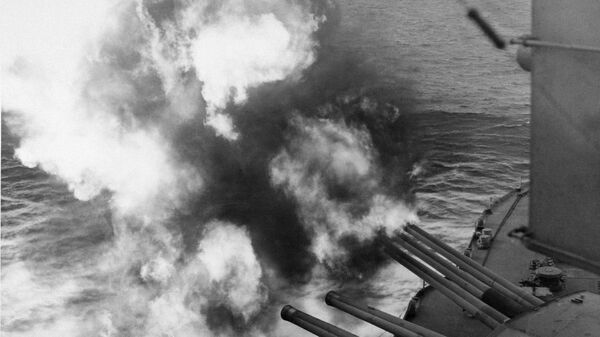In a statement Monday, the two private firms said they discovered the battleship wreck about 65 nautical miles southwest of Pearl Harbor. Photos of the wreck show that parts of the ship, including the anti-aircraft gun, hull and hatch for a 5-inch gun room, remain intact.
— Pearl Harbor Aviation Museum (@PearlHarborAvi) May 12, 2020
The search for the Nevada was completed using an Ocean Infinity research vessel, the Pacific Constructor. Ocean Infinity also used autonomous underwater vehicles, which can explore depths greater than 19,600 feet, to discover the wreckage.
“Nevada is an iconic ship that speaks to American resilience and stubbornness,” James Delgado, SEARCH’s senior vice president, said. “Rising from its watery grave after being sunk at Pearl Harbor, it survived torpedoes, bombs, shells and two atomic blasts. The physical reality of the ship, resting in the darkness of the great museum of the sea, reminds us not only of past events, but of those who took up the challenge of defending the United States in two global wars.”
— U.S. Naval Institute (@NavalInstitute) May 11, 2020
The USS Nevada was built in Quincy, Massachusetts, and was first commissioned in March 1916 and operated in the British Isles during World War I, after which it operated in the western Atlantic and the Caribbean. Decades later, it was the only battleship to “get underway during the December 7, 1941 Pearl Harbor Raid,” according to the Naval History and Heritage Command.
“Left in a sinking condition after receiving one torpedo and several bomb hits, she had to be beached. Vigorous salvage work and temporary repairs enabled her to steam to the US west coast in April 1942. She spent the rest of the year receiving permanent repairs and improvements, including a greatly enhanced anti-aircraft gun battery,” the Naval History and Heritage Command explains. The ship would go on to participate in World War II battles in both the Atlantic and Pacific Oceans.
The Nevada was later used as a target ship for atomic bomb tests in July 1946 in the Marshall Islands. The vessel finally sank on July 31, 1948, following days of target practice by the US Navy off the Hawaiian Islands culminating in an aerial torpedo strike.

